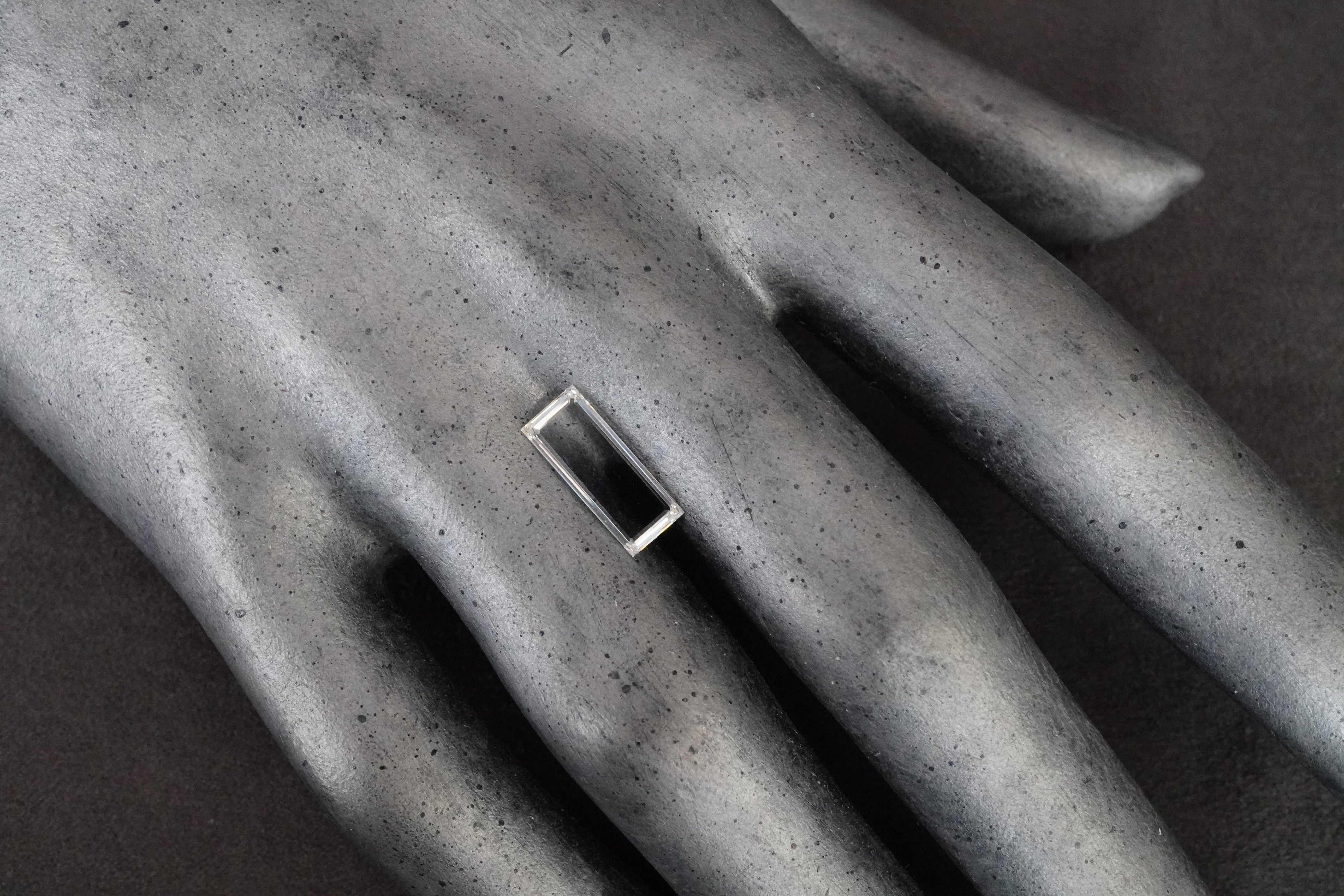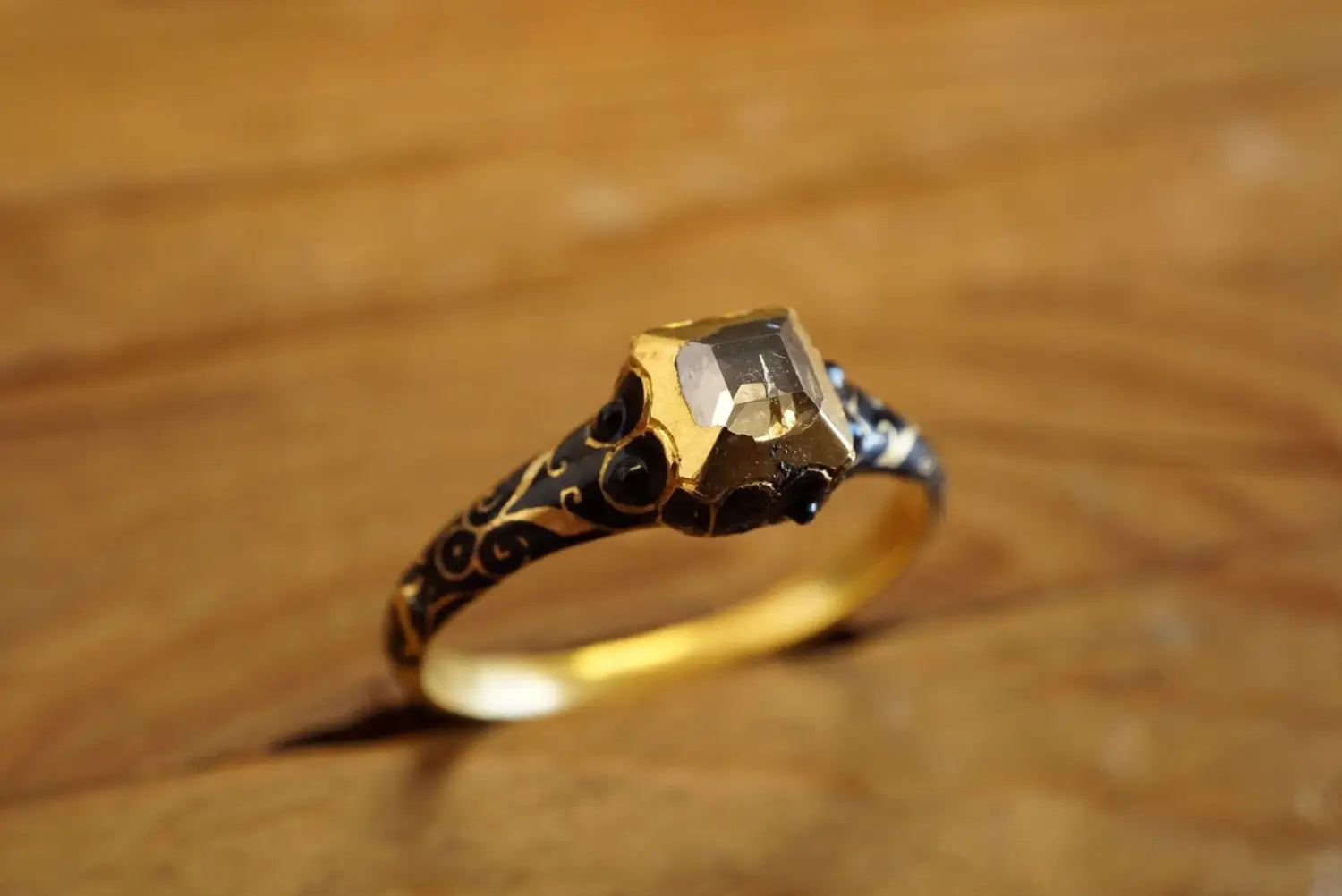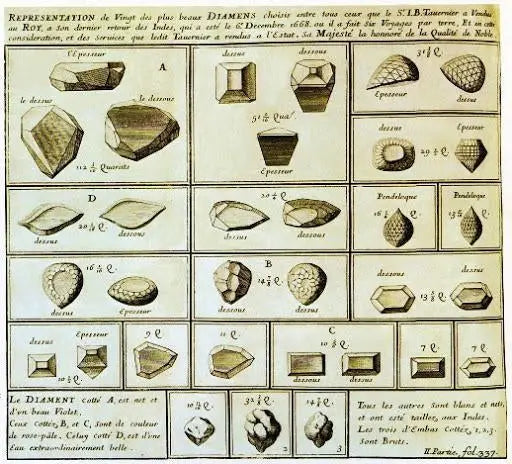
Antique Cut Diamonds: Portrait Cut
When we think of famous diamonds such as the 530.2-carat Cullinan I, which sits atop the Sovereign’s Sceptre with Cross in the Crown Jewels of the United Kingdom, or the nearly 46-carat Hope Diamond, known for its natural grayish-blue color, the phrase “works of art” certainly comes to mind. These diamonds captivate the imagination like no other gemstones and are considered among the most exceptional items in the world.
However, there are diamonds whose purpose is to showcase other “works of art.” These are known as “portrait-cut diamonds.”
A portrait-cut diamond, also called a lasque, originated in ancient Indian jewelry-making. It’s a thin, flat diamond typically cut from a lower-quality stone into shapes such as rectangles or squares. The large table of the diamond covers almost the entire crown, with polished upper and lower surfaces and slight facets along the sides, resulting in a shallow stone that resembles a slim sheet of glass.

As the name implies, portrait-cut diamonds were historically used in jewelry to display and protect miniature portrait paintings, much like glass is used in modern picture frames. Colorless diamonds with very good clarity were most desirable to ensure the paintings’ colors and details remained visible.
One of the most remarkable examples of a portrait-cut diamond is “The Russian Portrait” or “The Portrait Diamond.” Dating to around 1820, the diamond is a pear-shaped stone of “peerless purity,” measuring 40 mm by 29 mm and weighing about 27 carats, making it the world’s largest portrait-cut (also referenced as table-cut) diamond. The diamond encases a miniature portrait of Alexander I, emperor of Russia from 1801 to 1825, and is set into a Gothic-style gold memorial bracelet adorned with ivory and enamel. Under the diamond, the engraved inscription reads, "To the blessed Emperor Alexander I."

More recently, portrait-cut diamonds are resurgent, although they’re no longer used to cover miniature portrait paintings. Instead, portrait-cut diamonds are popping up in statement-making fashion and bridal jewelry. One notable example is actress Rooney Mara’s unique engagement ring received from actor Joaquin Phoenix in 2019, which features a striking hexagon-shaped portrait-cut diamond.

At Jogani, we have a special fondness for portrait-cut diamonds. We treasure the individuality of each stone—which come in unique shapes such as “bean,” “moon,” and “lozenge”—and design ring settings that highlight their subtle beauty. Portrait-cut diamonds are especially striking in our “tattoo rings,” offering an open window to the “work of art” beneath—the tattooed finger. Explore our stunning collection at Jogani.com.
Photo (top): A 1.47-carat portrait-cut diamond with E color and SI1 clarity from Jogani.


